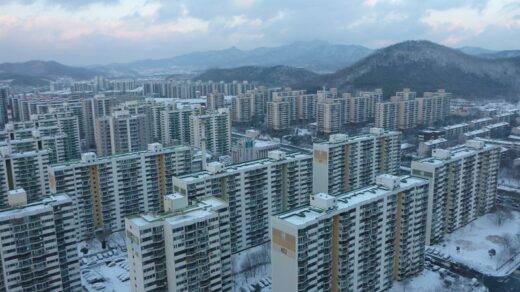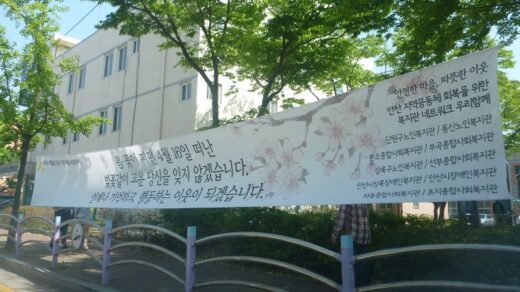 There are few people more qualified to discuss the Korean economic miracle than Peter Bartholomew. Having arrived as a Peace Corps volunteer, he has remained in Korea almost continuously since 1968. Peter worked in a Korean company for almost a decade in the 1970s, and for the last 28 years, he has run IRC, Ltd. in Seoul, specializing in the shipbuilding and construction sectors.
There are few people more qualified to discuss the Korean economic miracle than Peter Bartholomew. Having arrived as a Peace Corps volunteer, he has remained in Korea almost continuously since 1968. Peter worked in a Korean company for almost a decade in the 1970s, and for the last 28 years, he has run IRC, Ltd. in Seoul, specializing in the shipbuilding and construction sectors.
In this interview, Peter shares deep insights about Korean business, including techniques for negotiating with Koreans, as well as about efforts to preserve traditional hanok homes, an area on which he is particularly passionate. He believes that a modern Korea should be compatible with maintaining the natural and historical assets of the past.
Click here [EXPIRED LINK REMOVED: https://stevenbammel.com/category/archives/kbcforum/topics/korea-business-central-390] to listen to the interview, download the .mp3, subscribe in iTunes, read the transcript and or discuss this interview and this topic with other members of Korea Business Central visit the English-language discussion link.
Click here for the full list of interviews in the Korea Business Interview Series.
Main Points of the Interview
Topic #1 – Personal Background in Korea
- Peter arrived in Korea in January 1968 with the US Peace Corps and spent five years along the northeast coast of the country. He started working for a Korean company in 1972 and stayed there for eight years. In 1982, Peter founded IRC with some partners and is still operating the company today.
- The biggest change in Korea over the last forty years is the economic development of the country. Even in the 1970s, there were virtually no paved roads in the countryside and even electricity wasn’t widespread. Cars shared the road with oxcarts. There were no highways and very little manufacturing; it was primarily an agro/fisheries economy.
- Koreans today can be described with words like persistence, hardworking, impatient, aggressive and hungry for knowledge. Friendships in Korea last a long-time.
Topic #2 – Shipbuilding in Korea
- The three big shiyards in Korea are Hyundai (80-85 ships per year), Daewoo (40-50 ships per year) and Samsung (40-50 ships per year).
- STX’s shipyard in Korea is small but they have built a new shipyard in Dalian, China. Hanjin’s is the oldest Korean yard, located in downtown Busan, but they’ve also got a huge shipyard in Subic Bay, Philippines, too.
- The Korean majors are notable for their diversification, having expanded into offshore oil and gas structures, as well as drilling ships.
- Peter’s role at IRC is to organize custom shipbuilding programs for vessels that have never been built before. He identifies the best Korean resources (not just shipyards, but also specialist services and products) and helps in negotiating the deals, having completed over 100 projects in the last thirty years.
- Koreans shipbuilders have a diversified spectrum of products, not just ordinary container ships and bulk carriers, but also sophisticated L&G carriers and others, such as the new types of structures for the offshore industry, as well as industrial structures build in modular form to be assembled on-site. This diversification gives Korean makers longer-term stability.
- The core speciality in Korea is production engineering and productivity. This has been achieved by taking the industry to a new level of high tech, with exensive automation, excruciatingly sophisticated computerized control of production and scheduling. They are at least as good as the Japanese, but much better than the Europeans and Chinese in this regard.
- The Chinese can be expected to take more and more of the low-cost/low-tech business from the Koreans, but the Koreans are moving up the value chain quickly.
- The Koreans also benefit from a strategic mistake the Japanese made many years ago where they decided to emphasize pre-designed standardized ships. This limits the Japanese’ ability to produce new designs.
- It should be remembered that shipyards are really just huge, multi-disciplined industrial structure manufacturing facilities. Among those structures, some float and some don’t. As the Koreans are strong in this aspect of finding new ways to excel, we can expect them to keep diversifying, including into the green energy industrial structures, such as large turbine windmills. The Koreans are also expanding overseas, as mentioned above, and STX even owns yards in Europe.
Topic #3 – Korean Business in General
- The Korean conglomerates (“chaebol“) are moving from strength to strength and this success can be expected to continue. But what the Japanese have that the Koreans don’t have is a strong small- to medium-sized company community. The Koreans are too dependent on the chaebol and this is a major weakness of the Korean economy.
- Korean business is weak in services and in many aspects of management. There’s high productivity on the shop floor, but low productivity in the office and in software.
- When comparing Korea with Japan, it’s also helpful to remember that Japan started industrializing nearly 100 years before Korea and so the Korean economy is like a cake that’s grown too fast; it’s all full of holes. Now Koreans are going back and filling those holes, one-by-one, but it takes time.
- Korean young people are going overseas to study in record numbers and they’re bringing back new and innovative ideas. Once the generational shift kicks in and and the new generation moves into positions of power, the shift to a stronger small/medium-sized company sector, as well as better software and management capabilities, will take place.
- Changes in Korea won’t come from hiring in foreigners to positions of management authority but through an evolutionary, incremental process, developed within the crucible of Korea’s own cultural persona and psychology.
Topic #4 – Negotiating with Koreans
- When negotiating with a top-end multinational Korean company, the people there will have broad, international exposure and experience so negotiations can take place on international terms and conditions.
- Koreans are price buyers and so if you’re trying to sell to Koreans, once the basic qualifications are set, the Koreans are really only interested in price.
- Unsophisticated small/medium industry companies get upset when they see a Western contract. Contracts between Koreans are often shockingly short, naming what the product is, how much and that’s it. It’s a totally different concept toward documentation and legal contracting.
- So what the foreigner has to do to achieve his ends is to do adequate advance research. What kind of entity is the Korean party which whom he’s negotiating? What previous contracts or negotiations have been accomplished? Which are successful and why? The Western company should approach the negotiations based on this.
- When dealing with a small/medium industry company, a full-blown 25-page contract is a non-starter. The contract must be boiled down to basic, fundamental, can’t-live-without-it terms and conditions. Everything has to be done in Korean, with some kind of legal and language assistance along the way.
- A good way to bring a drawn-out negotiation to a close is to offer to split the difference 50/50.
- When negotiating, make sure to always ask yourself “Do they really undderstand the points I’m trying to get across?”. Continuously summarize in simple form. List clear, short options. This is because there aren’t just language problems, but also cultural psychology difference problems. 60-70% of the major contract disagreements are caused by a failure to understand at the beginning.
Topic #5 – Hanok and the Korean Land Development Model
- Peter has lived in the same Korean traditional style house (“hanok“) for the last 35 years. Recently, the city government tried to demolish it to make way for a new development but Peter and a group of neighbors joined forces to successfully block this in court.
- Koreans don’t put value on old buildings. In the US and Europe, we can find many old style homes that are more than 100 years old. But in Korea, after 20 years, a building doesn’t have any value; only the land has value.
- Even restoration projects often involve tearing down old and replacing with new construction, such as the current “rebuilding” of the traditional south gate to the city of Suwon.
- The years of rampant development, destroying old neighborhoods and natural beauty, to build new cities and developments is finally coming to an end. Ultimately, the government must stop deciding and planning these things without consideration for the market and environment.
Topic #6 – Wrap-Up
- The position of Korea between China and Japan is absolutely ideal for Western companies looking for a base in north-east Asia. IRC is actively seeking companies whose services and/or products would be valuable in Korea, in order to support them in this process.
- The key factor of doing business successfuully in Korea and in Asia is to do your homework about the companies or government entities with whom you need to interface to achieve whatever business aims you have. Don’t assume that business is done everywhere the same or that there’s going to be a magic bullet.



